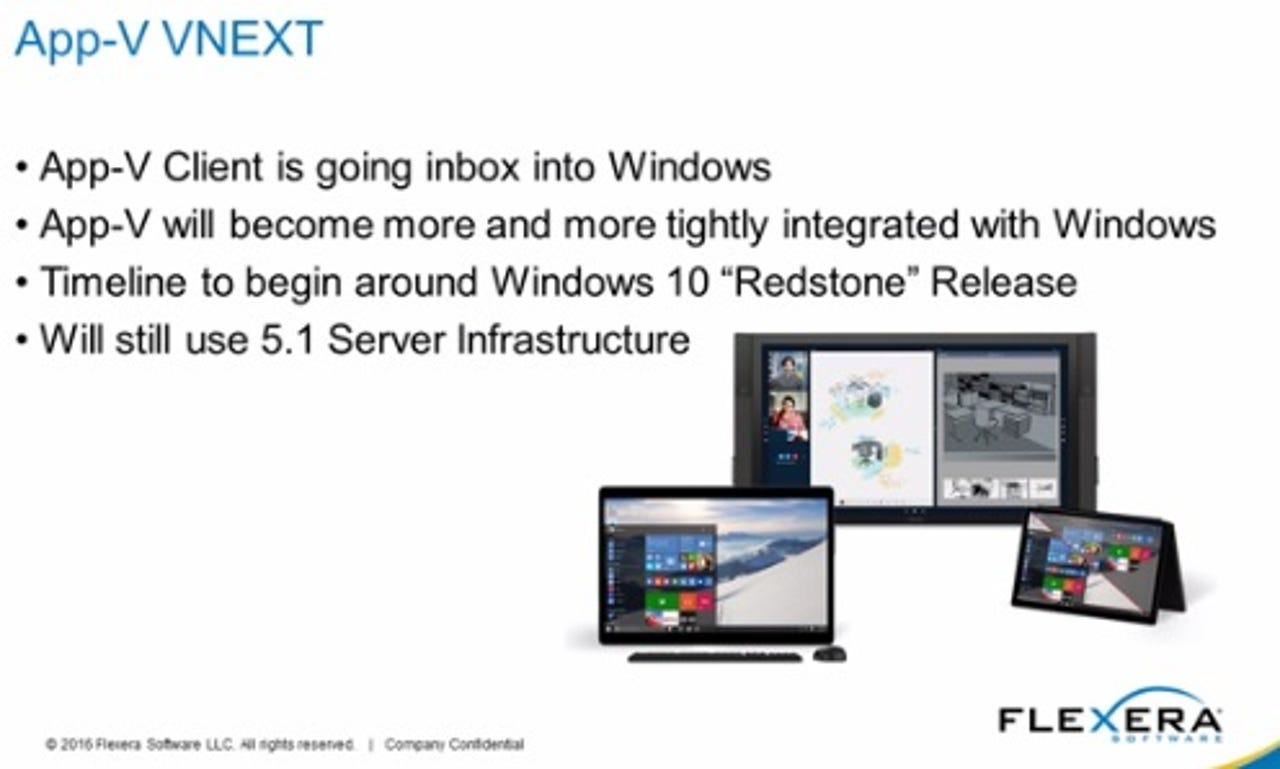Microsoft plans to build its App-V virtualization client into Windows 10 'Redstone'

Microsoft looks to be building its App-V application virtualization client directly into Windows 10 Enterprise with the upcoming "Redstone" Windows 10 release.

App-V -- a Microsoft virtualization technology that is currently part of the Microsoft Desktop Optimization Pack -- will become more and more tightly integrated with Windows over time. Microsoft's goal in doing this is to simplify app deployment and servicing, since App-V streams applications in real time to authorized clients from a virtual application server.
This new App-V/Redstone information comes courtesy of Michel Roth at ThinComputing.Net. (I found his February 18 blog post thanks to Chris Weber.)
Roth wrote up notes from Microsoft partner Flexera's "Best Practices for Application Virtualization" webinar from this week featuring Microsoft Senior Consultant Steve Thomas talking about App-V futures.
As the slide images from that webinar that I've embedded in this post indicate, Thomas made it pretty clear that Microsoft's current plan is to integrate the app-V client into Windows 10 Enterprise as of Redstone 1, which I've heard is due some time around June 2016.
According to Thomas, the App-V client will continue to use the App-V 5.1 Server infrastructure on the back-end. The idea is to make the integration seamless for those running App-V, as well as fully-backward compatible.
By the time of Redstone 2, which I've heard is targeted for Fall 2016, Microsoft plans to integrate App-V more tightly with other unspecified Microsoft products, Thomas told webinar attendees.
Thomas also shared a few new tidbits about Microsoft's "Centennial" Windows 10 porting-tool/ bridge during the webinar with the intent of explaining to attendees the differences between App-V and Centennial.
Thomas noted that Centennial may use similar "techniques" as used by App-V, but the two have completely different goals. Centennial is meant to provide developers with a fast path to onboarding their .NET and Win32 apps into the Microsoft Store. It will enable those apps to move from the Microsoft Windows Installer (MSI) to AppX, the current Windows distribution file format.
While Centennial is "influenced" by App-V and indirectly benefit App-V customers, it's for developers. App-V will remain aimed at IT pros and designed for administering existing Win32 apps using lifecycle management and usage tracking. App-V won't provide developers or customers with a way to migrate existing Windows apps to modern APIs, or application programming interfaces, as that's the domain of Centennial.
Last year, Microsoft officials said developers should expect to hear more about Centennial in calendar 2016, rather than in 2015 as originally planned.
I asked Microsoft officials as to whether the company does intend to integrate App-V into Windows 10 Enterprise. "We have nothing to share," said a spokesperson from the Windows team.